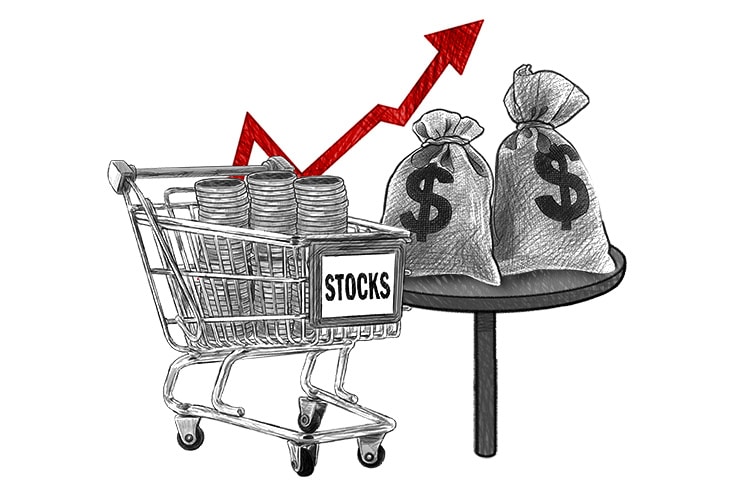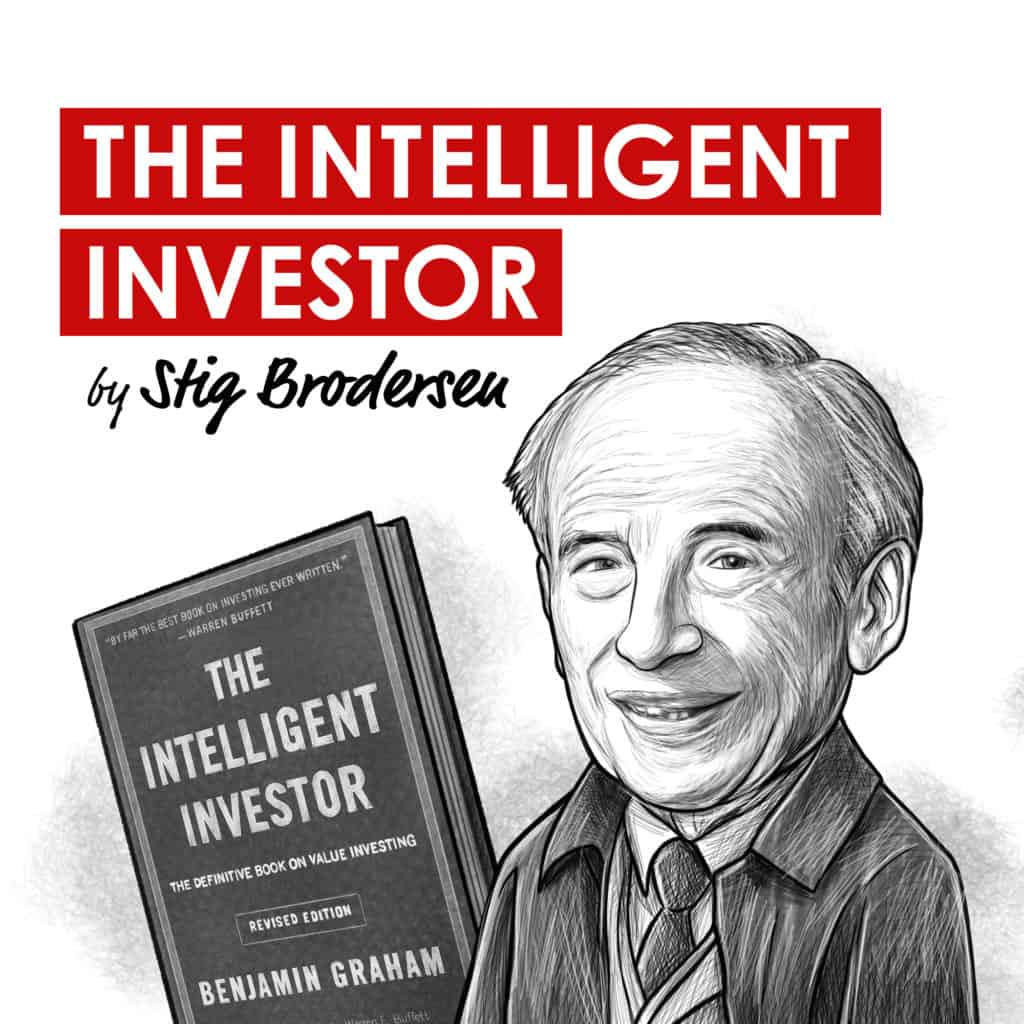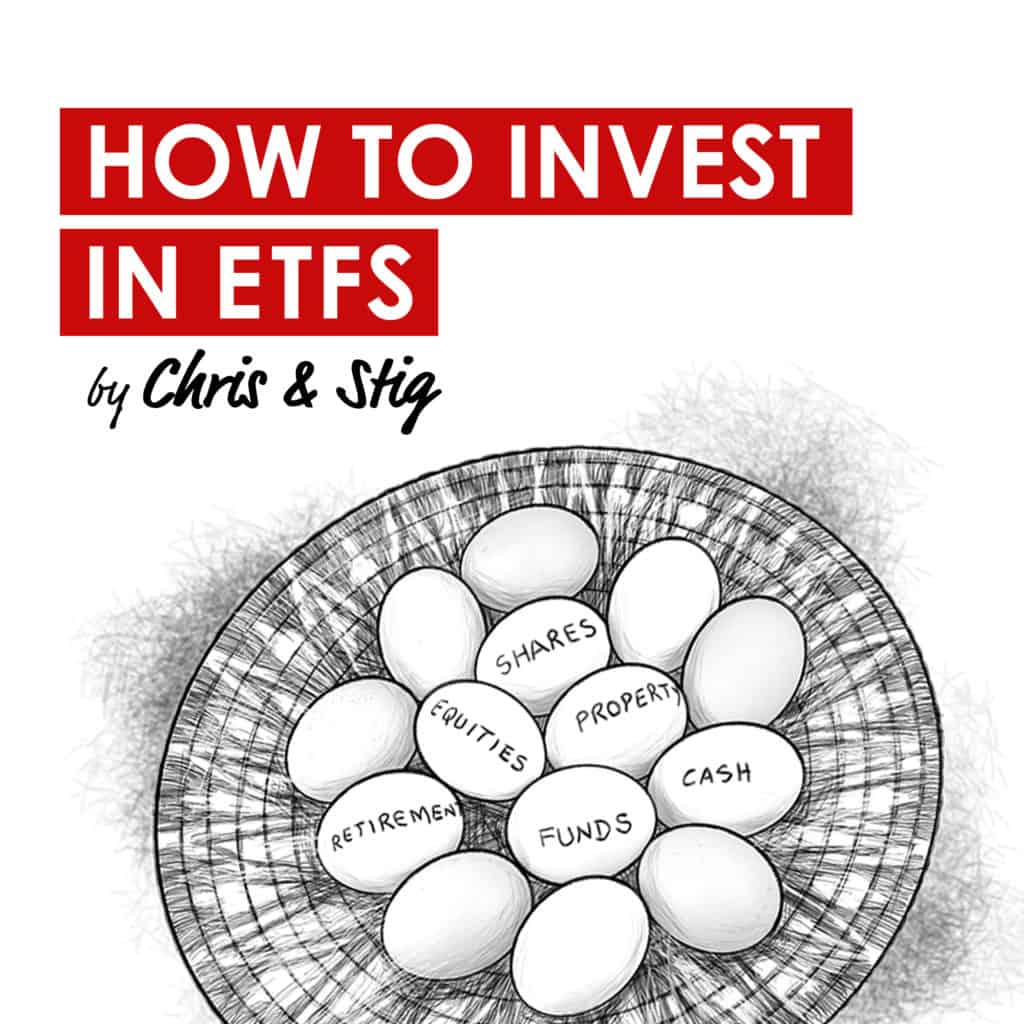Understand the financial markets
in just a few minutes.
Get the daily email that makes understanding the financial markets
easy and enjoyable, for free.
100 Bagger Stocks: What They Are and How to Find Them
By Rebecca Hotsko • Published: • 16 min read
Are you an investor with a desire for achieving above average returns, eager to find the next Amazon and transform a modest investment into millions? The road to a 100 bagger stock may seem like a daunting task, but it’s not impossible. With patience, discipline, long-term focus, and the right tools, you can increase your chances of finding the next 100 bagger stock.

In this article, we’ll explore the key characteristics of 100 bagger stocks and how you can identify them to potentially achieve life-changing returns.
WHAT IS A 100 BAGGER STOCK?
A 100 bagger stock is a stock that returns $100 for every $1 invested, resulting in a 100-fold return on investment. In other words, a $10,000 investment in a 100 bagger stock would turn into $1 million.
Getting a 100x return on a stock is a challenging feat, but not impossible. In Chris Mayer’s book, 100 Baggers: Stocks That Return 100-to-1 and How to Find Them, he found that the average 100 bagger took approximately 17 years to achieve, with a compounded annual growth rate (CAGR) of around 26%.
To put this in perspective, if an investor had put $10,000 in a stock with a 26% CAGR, it would have grown to over $1 million in 17 years.
Examples of Previous 100 Baggers
There have been numerous 100 bagger stocks throughout history. One notable example is Microsoft, which turned $10,000 into $1.2 million between 1986 and 2000.
Another example is Walmart, which turned $10,000 into $10.4 million between 1972 and 2012.
Both companies had strong competitive advantages and were able to grow their earnings at a high rate for many years. Other examples of 100 baggers include Home Depot, Apple, Comcast, Cisco Systems, and Amazon.
Contrary to popular belief, you do not need to invest in a new risky technology stock to receive these extraordinary 100x returns. In fact, according to Chris’s findings, companies that have become 100 baggers are not limited to any particular industry. Instead, businesses spanning a diverse range of sectors, such as retailers, beverage makers, food processors, tech stocks, and many others, became 100 baggers.
Chris even highlights how a seemingly “boring” industry such as railroads has produced 100 bagger stocks. One example is Union Pacific, which turned $10,000 into $1.3 million between 1980 and 2000.
What was their secret to success?
Union Pacific had a strong competitive advantage with its extensive rail network and was able to benefit from the growth of the US economy over several decades. While the railroad industry may not be as exciting as technology or consumer goods, Union Pacific’s consistent growth in earnings and dividends allowed it to deliver exceptional returns to long-term investors.
Another example is the restaurant chain Chipotle, which was able to achieve 100 bagger status over time by having a competitive advantage, strong management, and a focus on creating long-term value for shareholders. In the case of Chipotle, the company focused on providing high-quality ingredients and a unique dining experience, which helped it grow rapidly and deliver significant returns to early investors.
It’s important to note that the path to becoming a 100 bagger looked very different for many of these stocks. Some were fast growers that achieved rapid growth, while others were slow growers that built their wealth through compounding over time.
For example, consider the case of Walmart. It started as a small retail store and gradually grew into a giant corporation, dominating the retail industry with its low prices and efficiency. Similarly, Home Depot started as a single store and gradually grew into a national chain of home improvement stores. On the other hand, Cisco Systems and Amazon grew rapidly by capitalizing on the internet boom of the late 1990s and early 2000s.
Despite their different paths to becoming 100 bagger stocks, all 100 baggers shared some similarities. Firstly, they had a strong competitive advantage that allowed them to sustain high growth rates and generate high returns on capital over a long period of time. This could be in the form of intellectual property, network effects, or economies of scale. Secondly, they had a management team with a long term vision that could be trusted to execute strategies consistently, navigate through tough times, and continue to create value for shareholders. Finally, all these companies had a huge market opportunity, which allowed them to continue to grow at high rates for many years.
Understand the financial markets
in just a few minutes.
Get the daily email that makes understanding the financial markets
easy and enjoyable, for free.
HOW TO FIND 100 BAGGER STOCKS
Finding a 100 bagger stock requires a combination of luck and skill. Chris suggests that investors focus on companies that have high returns on capital, sustainable competitive advantages, and strong growth prospects. He also suggests looking for companies that are run by competent and honest management teams. Another big piece is having the right mindset for investing in these types of companies. Similar to the investing philosophy of Charlie Munger and Warren Buffett, Chris stresses the importance of having a good temperament, being patient and willing to hold onto an investment for many years.
Now let’s dive into each of these aspects in more detail.
What characteristics should I look for to find the next 100 bagger stock?
1. Companies with a high return on capital and strong growth prospects
According to Chris Mayer’s book, investors should focus on companies with high returns on capital (above 20%), sustainable competitive advantages, and strong growth prospects.
For example, companies with high returns on invested capital (ROIC) are often able to grow at a faster rate because they can reinvest their profits back into the business. Chris gives an example of the company, Monster Beverage, the famous maker of energy drinks and other beverages. Monster became a 100 bagger in under 10 years. The company became a 100 bagger between 2003 and 2012, delivering an average annual return of around 47%. The company actually hit the 100 bagger mark in 2006 and went on to be a 700+ bagger by the end of 2014.
One of the reasons behind Monster’s success was its strong brand and product innovation. The company was able to develop new and popular energy drinks that appealed to a younger demographic, which helped to fuel its growth. Monster also had strong returns on invested capital, which allowed it to reinvest profits back into the business to drive further growth.They had management that understood what drove shareholder value and growth in the business. They spent heavily on promotions, marketing campaigns, and spent much time and money figuring out different ways to reach customers. By combining strong earnings growth with high returns on capital and a competitive advantage, Monster was able to become a 100 bagger and deliver exceptional returns for its shareholders.
2. Great management teams with lots of stake in the game
Another important factor to consider when looking for 100 bagger stocks is competent and honest management teams. Ideally, founder-led company’s, or management with lots of stock ownership in the company are preferred and often are better at growing shareholder value over time as their incentives are aligned. This aspect of finding great quality companies should not be overlooked, and investors should look for companies whose management teams have a track record of making good capital allocation decisions and running the business efficiently.
One way the quality of management can be assessed is by looking at the company’s return on invested capital (ROIC) or return on equity (ROE), as strong management that is aligned with shareholder interest should show up in a high ROIC over time.
For instance, Berkshire Hathaway’s CEO, Warren Buffett, is known for his astute investment decisions and has led the company to achieve numerous 100 baggers, including Coca-Cola and American Express.
3. Smaller companies tend to do better
Chris also talks about how the size of the company matters. Particularly, he found that most of the stocks that became 100 baggers were small-cap to mid-cap stocks when they started, meaning they had a market capitalization of less than $2 billion when they first started. In fact, the median market cap for the 100 baggers in his study was only about $500 million and the median sales of these companies were around $170 million.
This suggests a couple things.
First, if your goal is to find a future 100 bagger company, then you need companies with the potential for long runways of growth that can provide outsized returns for many years. This is much harder to do if the company is already very large.
Instead, there are likely greater opportunities for outsized returns in smaller companies with strong growth potential and sustainable competitive advantages.
Think about it this way, it’s much harder (albeit, not impossible) for a company with a $100 billion market cap to 100x than it is for a company with $1 billion in market cap.
It’s important to note that investing in smaller companies carries higher risks, including greater volatility and lower liquidity and it’s never guaranteed that an investment will work out. If you are interested in learning more about investing in small cap stocks, check out my Complete Guide to Small Cap Investing article.
4. Do not overpay for potential growth
Investors should also be mindful of valuation, and aim to find stocks with strong growth prospects that are still trading at a reasonable price.
In “100 Baggers,” Chris notes that all 100 bagger stocks had one thing in common – growth in earnings per share (EPS). However, he also points out that the real magic happens when this growth is coupled with multiple expansion.
For example, when Walmart achieved 100 bagger status between 1972 and 2012, its EPS grew at an average annual rate of 20%, but its P/E multiple also increased from around 7x to 15x, further boosting returns for investors.
The same was true for Home Depot, which had an EPS growth rate of 23% between 1982 and 1999, but also saw its P/E ratio increase from around 10x to over 30x. By buying undervalued stocks that have the potential for earnings growth and multiple expansion, investors can significantly increase their chances of finding the next 100 bagger.
This is harder said than done as one of the biggest challenges with high growth companies is finding the ones that aren’t trading for sky high multiples.
Investors are often tempted to pay top dollar for companies that show the potential for impressive growth in the future. But, investor’s should always be mindful of paying too high a multiple today, as eventually that multiple will contract over time, eroding your returns and your chance at the stock reaching 100 bagger status. This is the insidious nature of mean reversion, a concept all investors should be wary of and one that I have written about previously.
Chris gives the example of Gillette in the book, which became a 100 bagger, but took a long time to get, nearly 32 years. Part of this is because despite consistent earnings growth for many years, the multiple on the earnings contracted over the same period. In 1962, the stock traded for around 20x earnings, and two decades later it traded for around 10x earnings. It was only when Gillette reversed this trend and its multiple expanded along with earnings growth, that it started its march to become a 100 bagger.
That said, there are important nuances to this rule. Take Amazon, for instance, which always appeared expensive to investors but still managed to compound over time and become a 100 bagger. Between 1997 and 2017, Amazon’s EPS grew at an average annual rate of 36%, while its P/E multiple remained consistently high. In cases like these, it’s important to look beyond the traditional metrics and focus on the company’s long-term potential for growth and innovation. As Chris notes in “100 Baggers,” investing in a 100 bagger stock requires a mix of art and science, and sometimes the best opportunities lie outside the conventional wisdom.
Overall, in order to find 100 baggers, investors will need to have some idea of the company’s current valuation. If you are unfamiliar with how to calculate the intrinsic value of a stock, give this article a read, which goes over intrinsic valuation for beginners in detail.
You may also want to check out some of our podcast episodes, such as the one with Aswath Damodaran, where he comes on Millennial Investing and gives a masterclass on stock valuation.
5. Have a long time horizon and buy-and-hold mindset
One key piece of advice from Chris is that investors must possess patience and the willingness to hold onto their investments for a significant amount of time.
In addition to being patient, investors should also adopt a long-term perspective and resist the urge to sell a stock simply because it has gone up or down in value; instead, investors should maintain their investment as long as the company remains in line with their investment criteria.
In his book, Chris Mayer highlights the “coffee can” approach, which involves buying stocks and then holding onto them for a long period of time without trading or checking their prices frequently.
This approach is supported by research where a study by O’Shaughnessy Asset Management found that investors who bought and held onto stocks for more than 10 years outperformed those who frequently bought and sold their investments.
This can be especially challenging for 100 bagger stocks, as they often experience significant price swings and may lose 50% or more of their value multiple times before ultimately reaching their full potential. However, holding onto these stocks and riding out the volatility can pay off tremendously in the long run.
Another common question among investors is how early did I have to get into this company in order to 100x my returns?
The good news is that Chris’s study found that there were often multiple opportunities to buy into these companies and achieve 100 bagger status. Investors did not have to buy in at the IPO or even in the very early stages of the company’s growth. In fact, many of these stocks experienced significant drawdowns and dips in their share price over the years, providing investors with multiple chances to enter at an attractive price point. This emphasizes that the key is to hold on for the long-term, even in the face of short-term volatility, in order to reap the rewards of these companies’ growth over time.
In short, finding a 100 bagger stock requires a combination of careful research, patience, and a long-term focus. By focusing on companies with high returns on capital, sustainable competitive advantages, competent management teams, and trading for a reasonable valuation, investors can increase their chances of finding the next 100 bagger.
While this strategy may be appealing to some investors, it may not be suitable for all. It’s important that your investment strategy matches your personal investment philosophy which centers around your beliefs about markets. If you are not sure what your investment philosophy is, check out my article on how to figure out what your investment philosophy is, so that you can align your investment strategy with your personal investment goals.
100 BAGGER BOOK
Chris Mayer’s book 100 Baggers is a comprehensive guide to finding stocks that can return 100-fold over the long-term. Chris studied companies that have achieved 100-fold returns from 1962 to 2014, and found that they all shared similar characteristics, such as high returns on capital, sustainable competitive advantages, and strong growth prospects.
The book covers these characteristics of companies that have achieved 100-fold returns in detail, as well as strategies for finding these types of stocks.
In the book, Chris provides numerous examples of companies that have achieved 100-fold returns and analyzes their performance on how they became 100 baggers. He also discusses the psychological barriers that can prevent investors from holding onto these stocks for many years.
You may want to check out Clay’s book review on 100 Baggers and his interview with Chris Mayer.
FREQUENTLY ASKED QUESTIONS ABOUT 100 BAGGER
Understand the financial markets
in just a few minutes.
Get the daily email that makes understanding the financial markets
easy and enjoyable, for free.
About The Author

Rebecca Hotsko
Rebecca Hotsko is an investor and entrepreneur based in Canada. Most recently, she co-founded a luxury boat sharing club in Kelowna B.C. Rebecca graduated from the University of Saskatchewan with a bachelor’s degree in Economics and since has completed CFA level I and II. In prior years, Rebecca gained valuable experience working as an analyst for the Bank of Canada, the federal energy regulator and in investment management. Her passion for teaching others how to invest using time-tested strategies backed by empirical data also led her to create an investing blog in 2020.
Rebecca Hotsko
Rebecca Hotsko is an investor and entrepreneur based in Canada. Most recently, she co-founded a luxury boat sharing club in Kelowna B.C. Rebecca graduated from the University of Saskatchewan with a bachelor’s degree in Economics and since has completed CFA level I and II. In prior years, Rebecca gained valuable experience working as an analyst for the Bank of Canada, the federal energy regulator and in investment management. Her passion for teaching others how to invest using time-tested strategies backed by empirical data also led her to create an investing blog in 2020.







